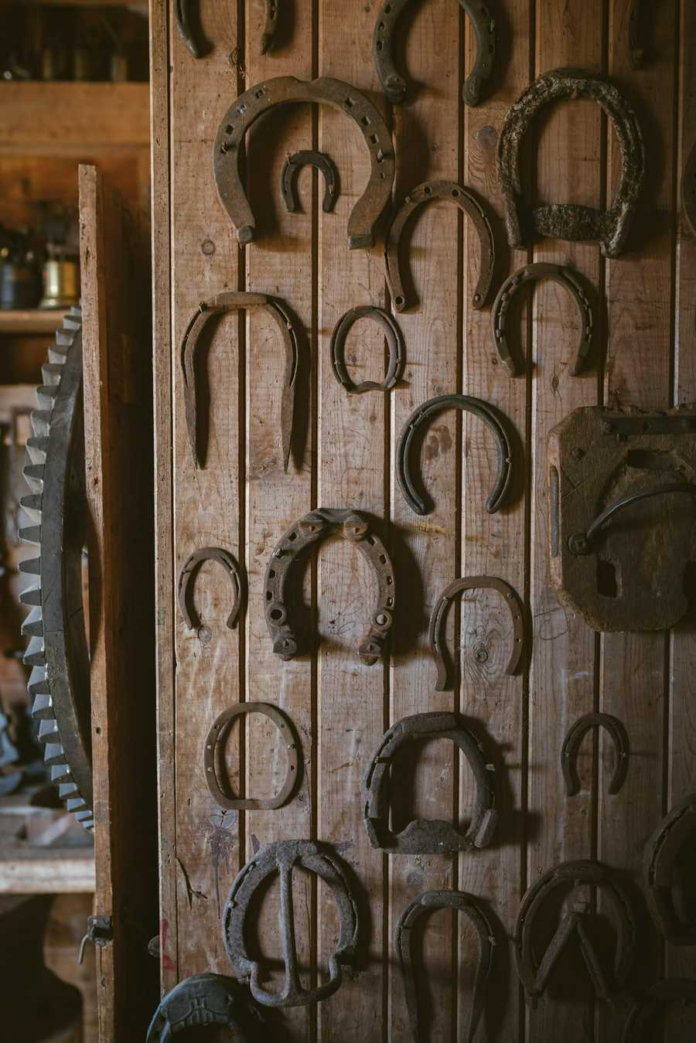Horse hooves proper care and maintenance, or they become painful hindrances rather than the helpful appendages they should be. For the 9.2 million domesticated horses, mules and burros in the United States, protecting their feet is a predominant concern.
So, how exactly do we protect all of their hooves? Enter the horseshoe.
What is a Horseshoe?
A horseshoe is a device that is nailed or glued to the underside of a horse hoof to protect it from wear and tear. These shoes protect the keratin that makes up horse hooves from damage and deformity.
Historically these devices have been made of metal. However, modern horseshoe offerings include fully synthetic horseshoes made from ultra-resilient composite materials. These synthetic horseshoes are lighter and more resilient than their metal counterparts. Like metal horseshoes, synthetic horseshoes can also be nailed, or glued on, to avoid nail damage.
Attaching a Horseshoe
Constructing and installing a horseshoe is a process that consists of multiple steps. Farriers, experienced and knowledgeable equine professionals, carry out these steps. A farrier uses their knowledge and skills to craft a horseshoe, then trims the hoof and finally, attaches the horseshoe.
Forging Horseshoes
Forging custom shoes is not as common as it used to be. The wide range of prefabricated metal and synthetic horseshoes on the market is supplanting the need for customized shoes.
However, certain conditions may arise that require a farrier to shape a shoe to a precise fit. These situations often arise from the unique anatomy of a horse or its working conditions.
Modern forged horseshoes begin life as straight metal bar stock, usually steel or aluminum. The nail holes are then marked on the bar before it goes into the forge. This process allows the farrier to customize the angle and placement of the nail holes to fit that particular horse.
The bar is heated in a forge until it is bright orange throughout. The bend of the toe is the first piece of the shoe to be formed. Again, farriers can fully customize the fit of the toe to ideally suit the unique anatomy of a horse during this process.
Fullering, the process of forming a groove down the center of the piece, is sometimes used to add traction to a shoe. Farriers then refine the shoe into the classic horseshoe shape, and nail holes are added to the shoe creating the finished product.
Trimming and Shoeing
Farriers visually and manually inspect horse hooves before they trim and shoe them. Farriers asses each foot for signs of damage and monitor growth.
Trimming is a vital process of hoof maintenance and keeps the horse balanced, healthy and pain-free. This process includes removing dead material and detritus from hooves and altering their shape.
Shoeing may require farriers to customize shoes so that all the pressure and weight are on the hoof wall, where shoes are attached.
Shoes may be hot fit to a horse. Hot fitting is when the shoes are heated then placed on the hoof. A hot fit does not hurt the horse and further increases the overall efficacy of the shoe.
Farrier then nail or glue on the shoes. Nails are bent over, and the sharp edges filed away. The unshoed hooves then receive the same procedure.
Protect Your Horse Today
For all of your horseshoe and other farriering needs, reach out to Centaur Forge today.




